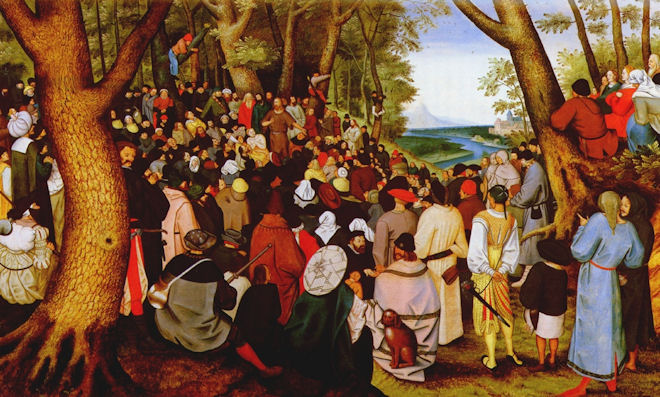
|
Posted April 14, 2008
Book: John the Baptist: Prophet and Disciple Author: Alexander J. Burke, Jr. St. Anthony Messenger Press. Cincinnati, OH. 2008. Pp.232 An Excerpt from the Jacket:
Alexander Burke pieces together the mystery of this well-known disciple of Jesus one chapter at a time, covering John’s preaching, arrest and execution, his role in Eastern and Western Christian Tradition, and the many paradoxes surrounding him. An Excerpt from the Book: In the thirteenth century, interest in John the Baptist received a great stimulus from Dante, who in Canto XXXII of his Paradiso presents John the Baptist as seated on the opposite side of the heavenly court from Mary, . . . ever there to dwell, Who, ever holy, endured the desert’s fare And martyrdom, and then two years in Hell. Dante is presenting a literary version of Deesis, noting John’s ‘ever holy’ status as exempt from original sin, and noting his two-year stay in hell (his expression for the abode of the dead before Christ opened the doors to heaven) before he could announce the Christ to those in limbo. Honorarius of Autun in the twelfth century had proclaimed John as “greatest of all the saints, equal to the angels and an angel himself.” These two different literary accolades furthered artistic interest in John as the head of the choir of prophets frm the Old Testament. In the northern portal of Chartres Cathedral, John is pictured as the greatest and last of the prophets. Lucca della Robbia in the sacristy of the Cathedral of Florence has John seated opposite Mary (as in Dante) but at the head of the double college of four evangelists and four doctors of the Latin Church. Like Saint Michael, John is often venerated even in the West as both archangel and as saint. He is even elevated to the dignity of the Seraphim by the fathers and artists of the West. In medieval angelology, the Seraphim were the first of the nine orders of angels. The cult of John the Baptist under all these influences spread rapidly all over Europe. Eight churches in Rome were named for John the Baptist as well as churches in Amiens, Venice, Lyon, Bretagne, Saissons and Chartres. Baptisteries all over the continent were named after John. In fact, this was so prevalent in France, that John was often called Saint John of the Fountains, or Saint John in the Round because of the circular plan of Frence Baptisteries. Table of Contents: Introduction: The enigma of John the Baptist 1. The birth of John and the birth of Jesus: the parallel accounts 2. John in the desert: the apostolate of the wilderness 3. John the preacher: the voice of the prophet 4. John the Baptizer: witness to the Trinity 5. The arrest and execution of the last prophet 6. Jesus’ views on his precursor 7. John’s new role in the fourth gospel: witness to Christ 8. John the Baptist in eastern Christian tradition 9. John the Baptist in western Christian tradition 10. John the Baptist: forerunner yet follower of Christ Conclusion: John as a model for contemporary Christians |
|
